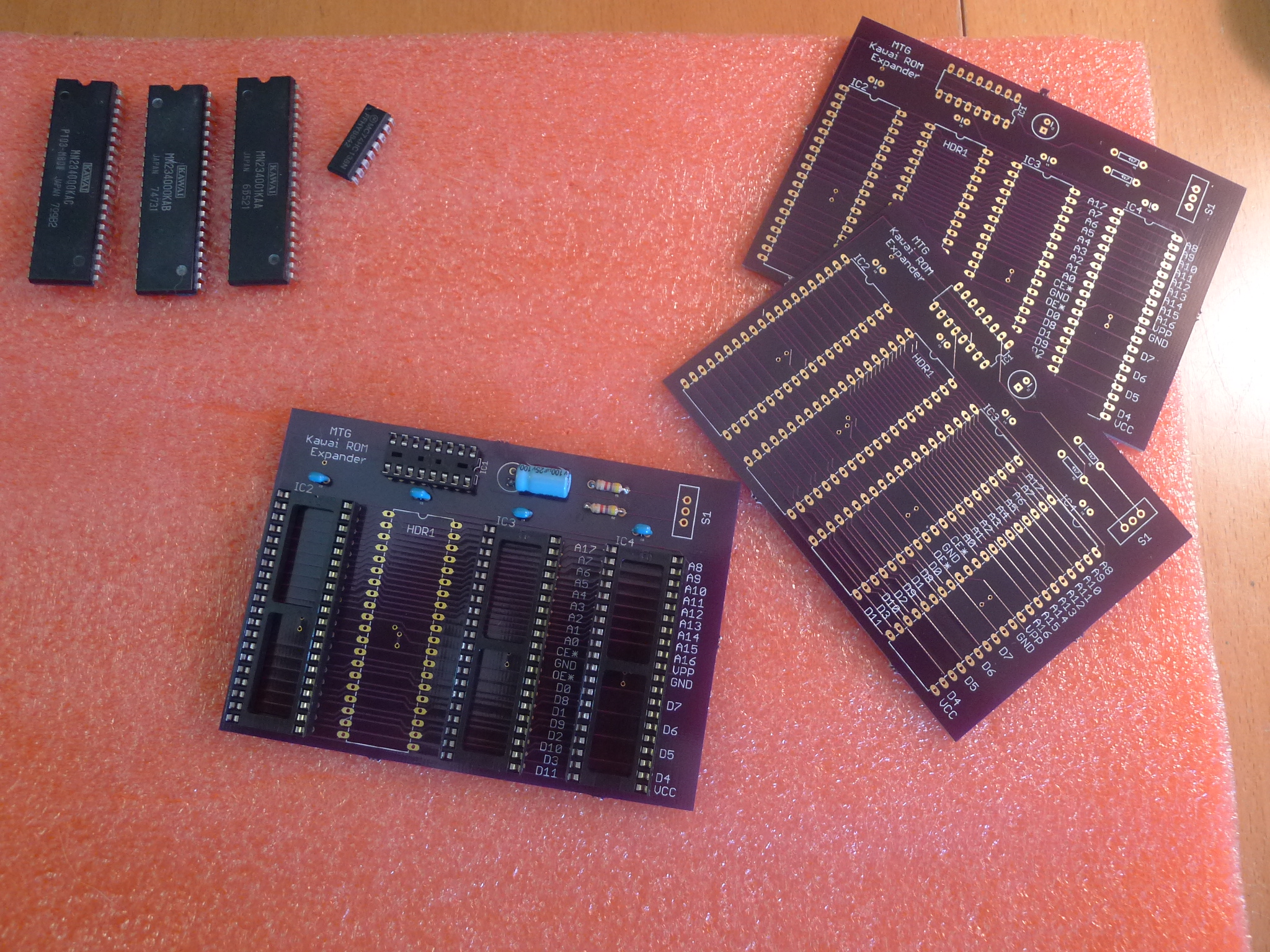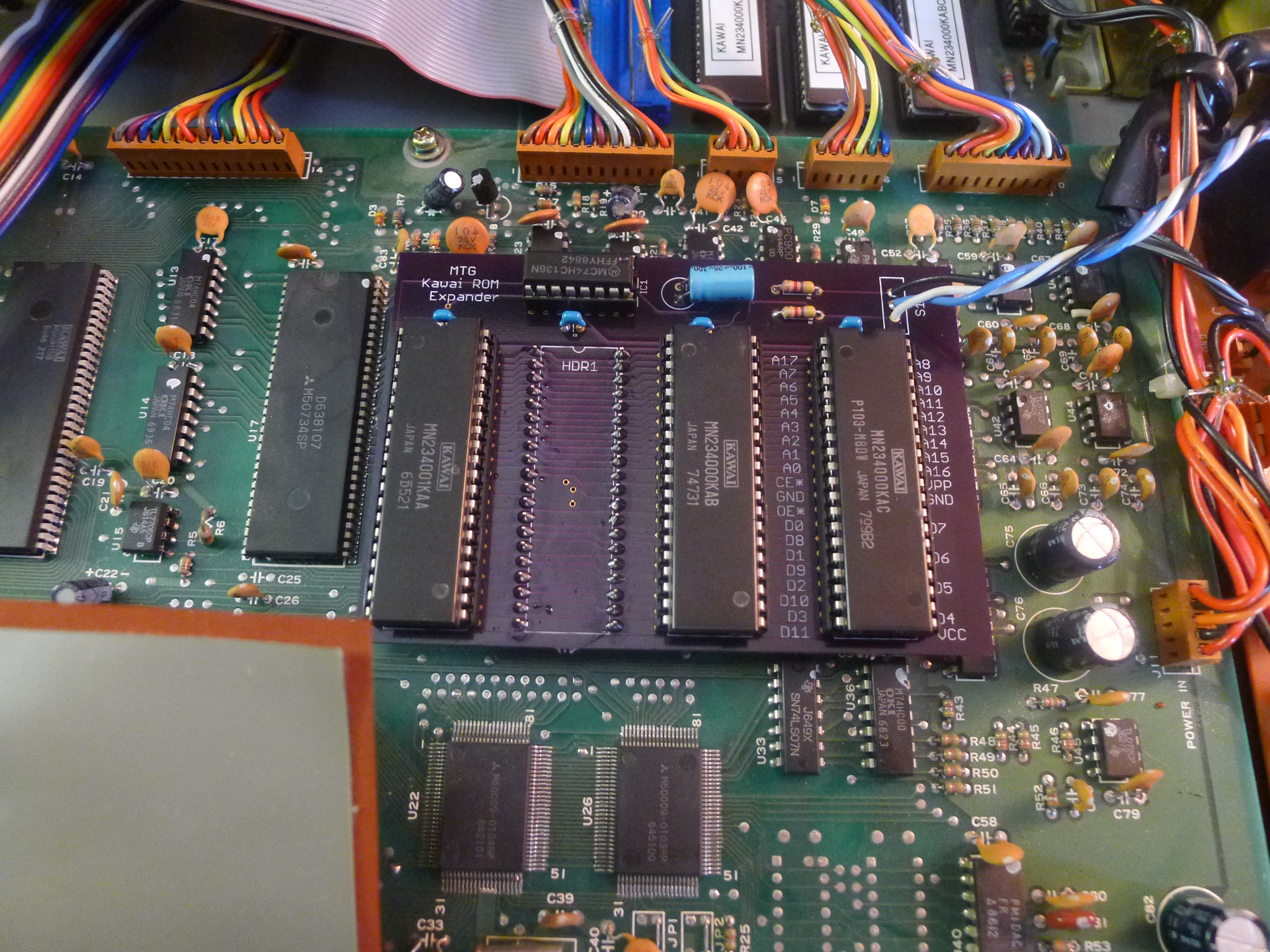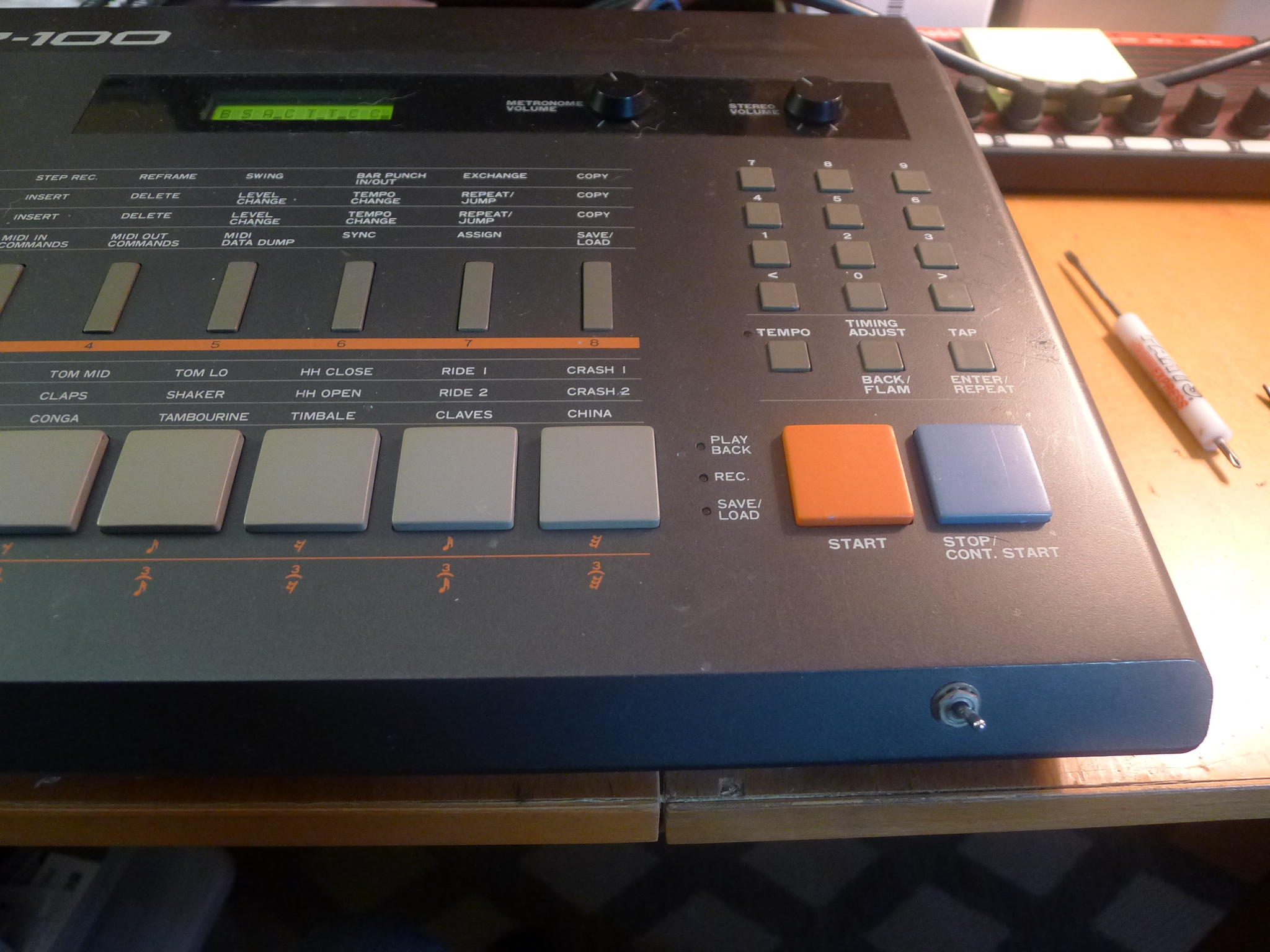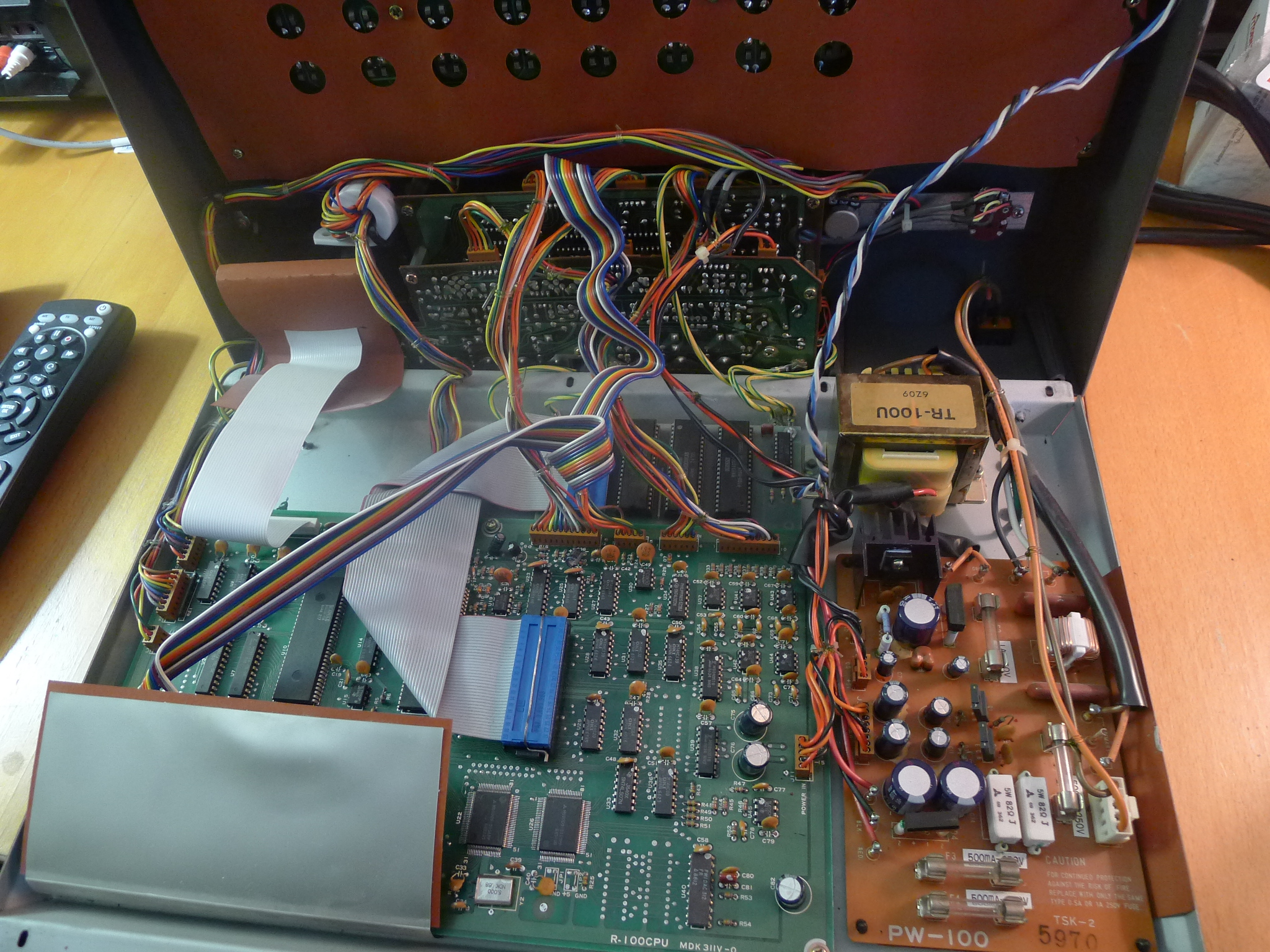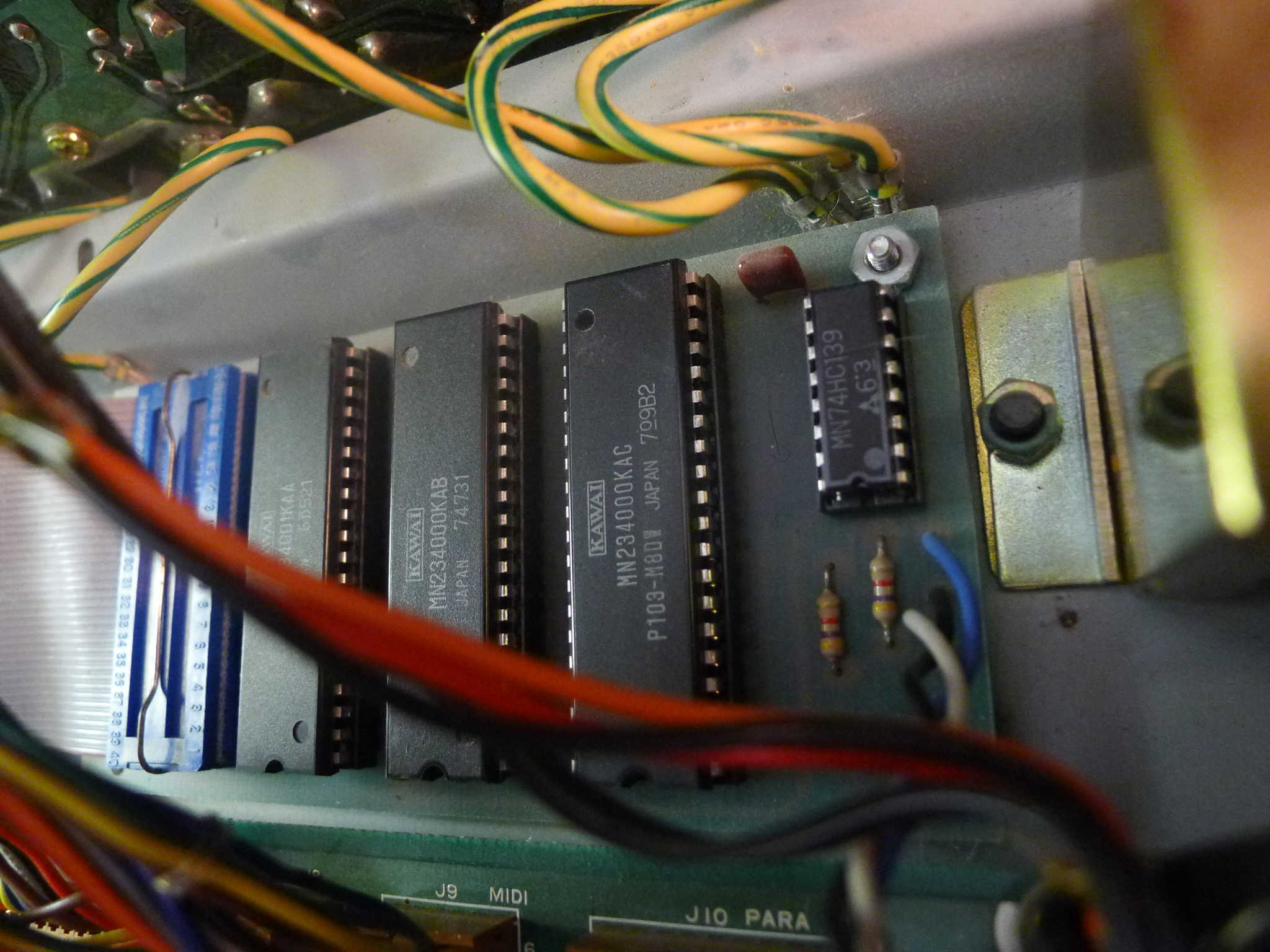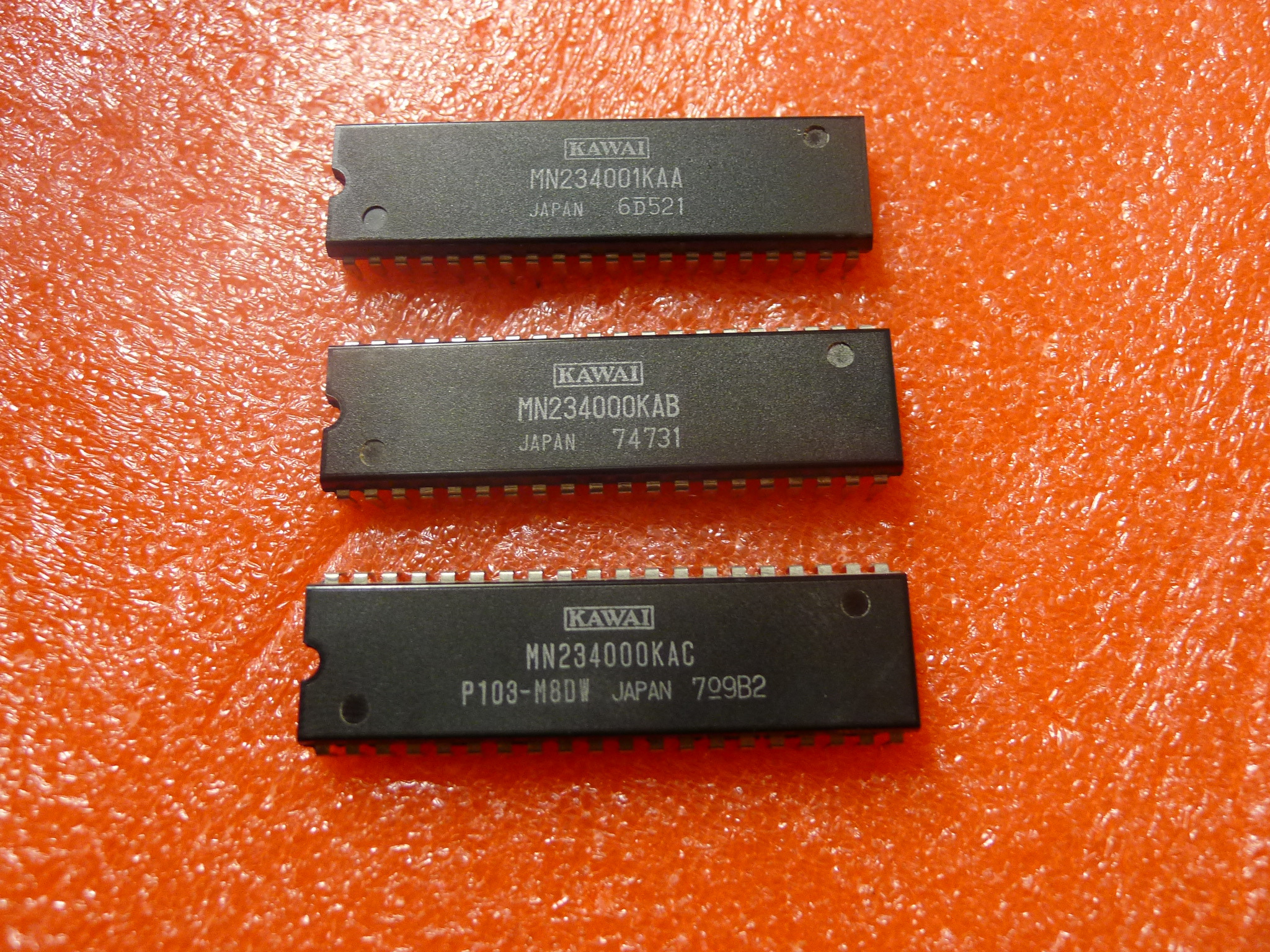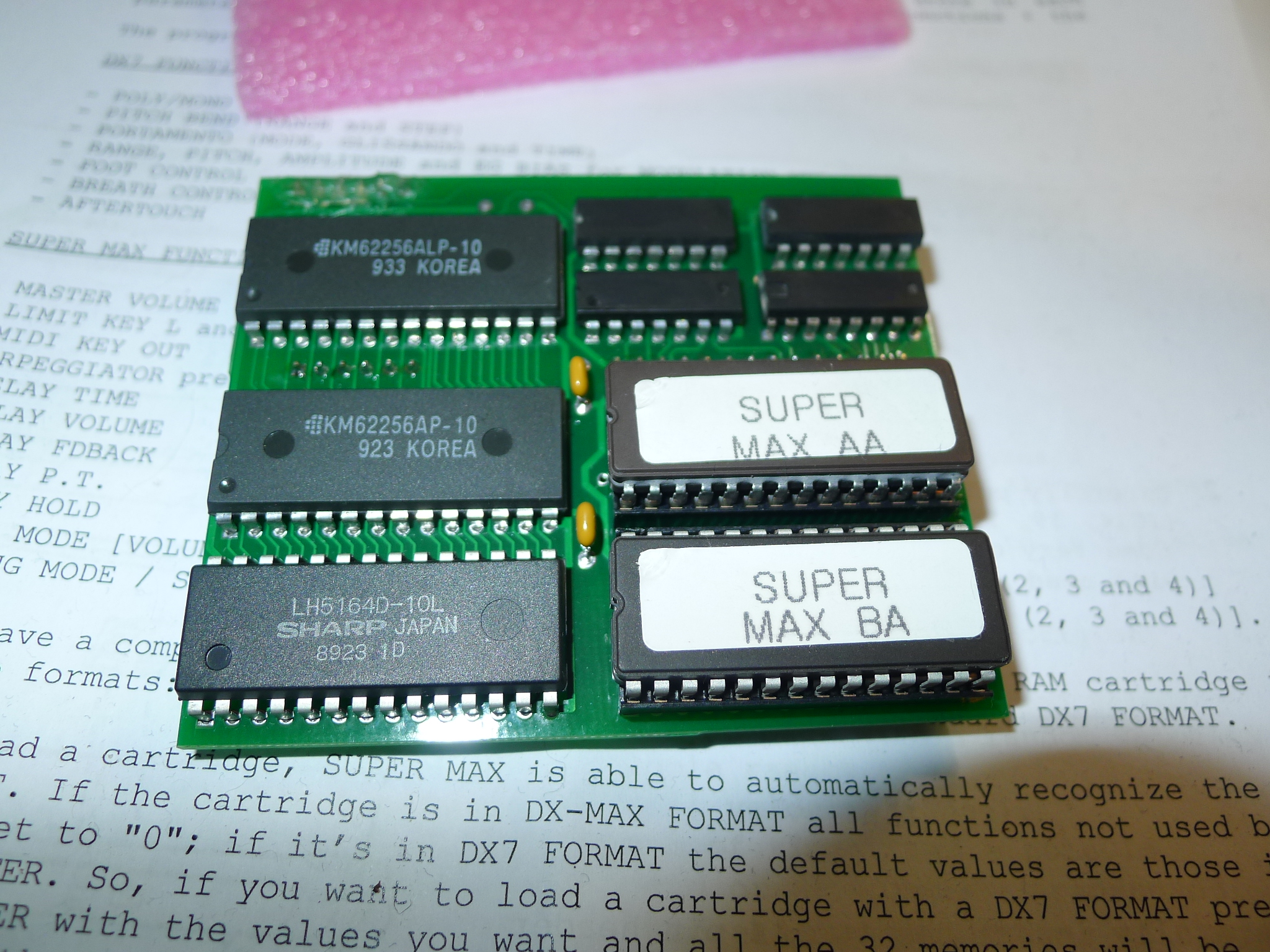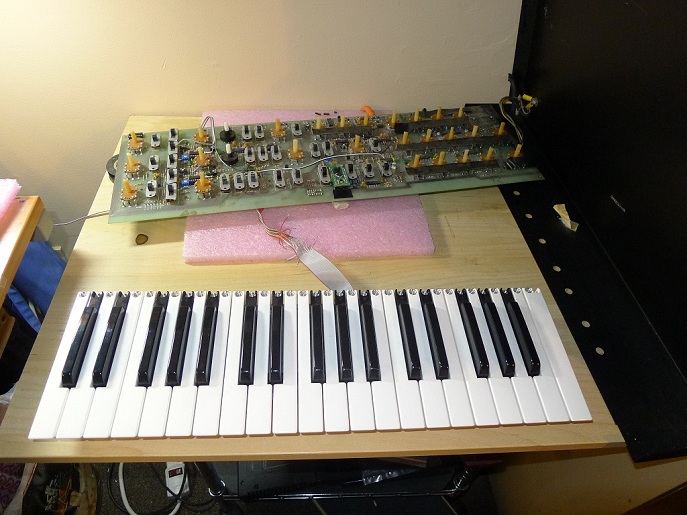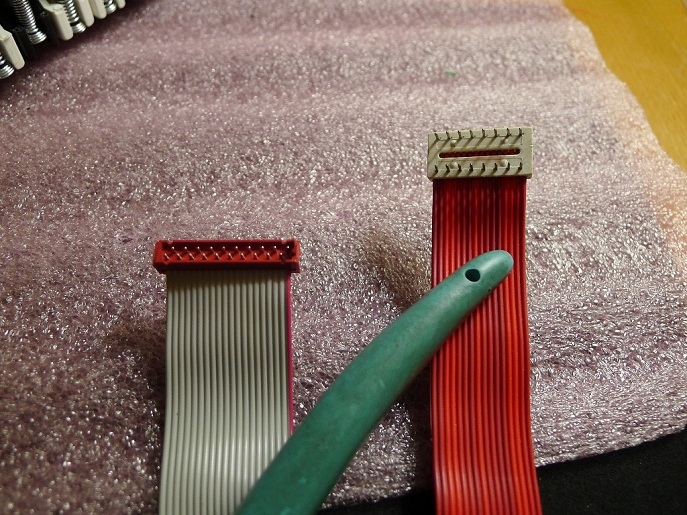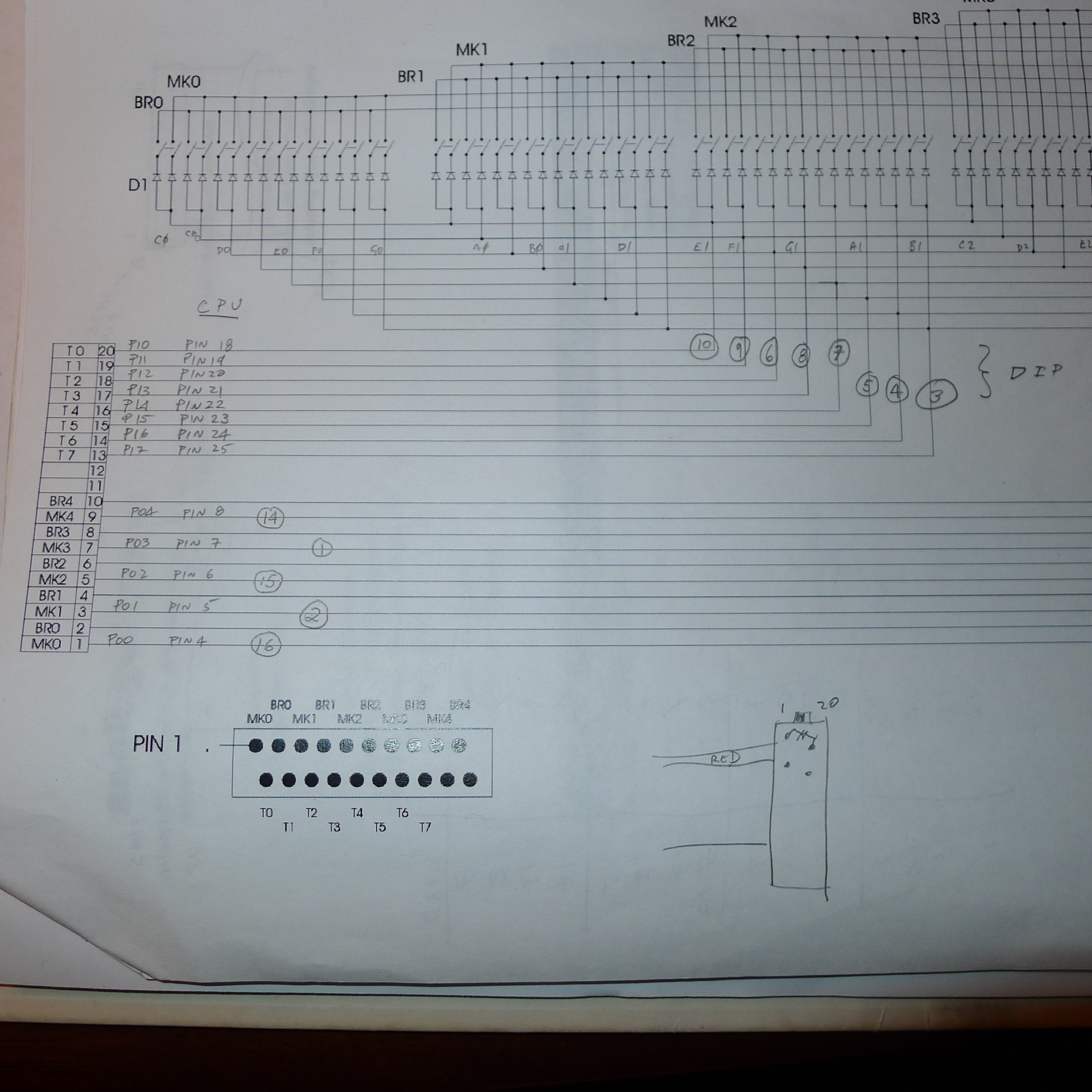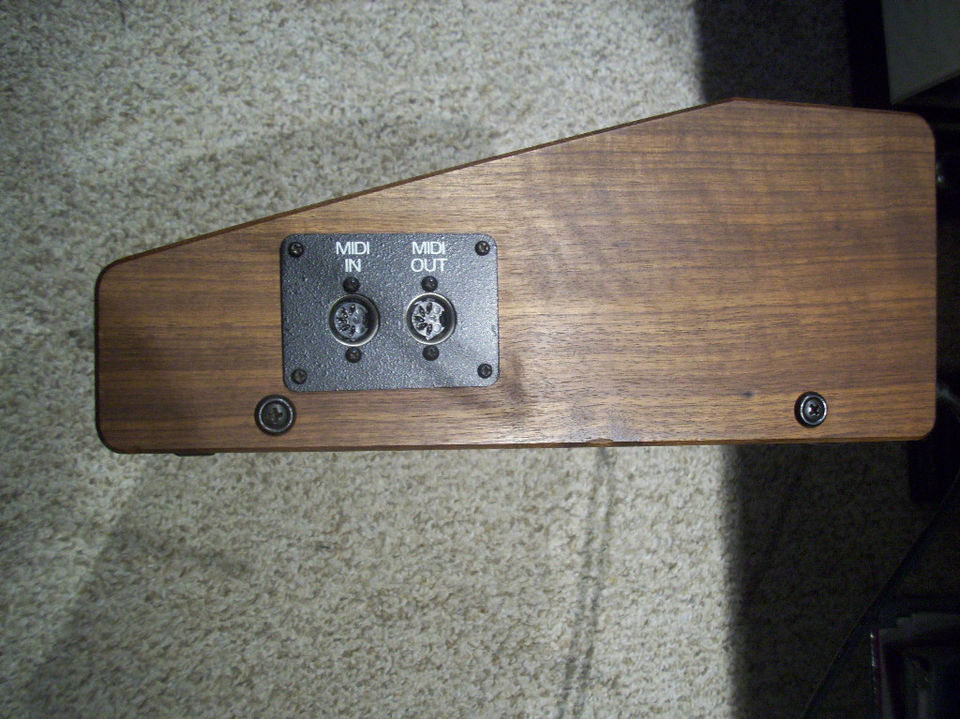As you may have seen in my previous post, my Kawai R-100 Drum Machine came with a 3-EPROM “soundswitcher”. Since this is no longer available, I thought I would make my own. It’s not an exact clone of the Drumware Inc board. First, I used different logic … just a personal choice. Second, I eliminated the ribbon cable to cut down on cost. It looks like there is just enough vertical room to pop the board on top, so that’s what I did. In my unit the Kawai ribbon cables are such a mess that it’s hard to close up the lid already. Finally I did a 2-layer board compared to the old Drumware single-layer board that was probably taped up by hand. In fact this is how I used to make SRAM memory expansions myself in the late 80’s. I even advertised them in the back pages of Polyphony magazine (for JX3P, OB DX, Polysix and a few others).
I also silk-screened the pin information on the top.
Read my previous post for more background info.
GB

